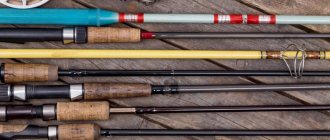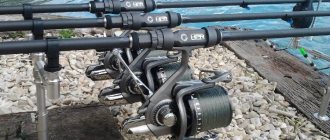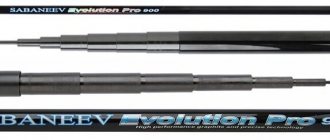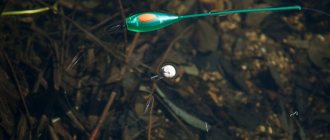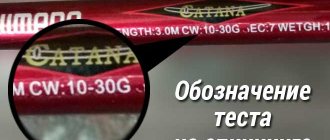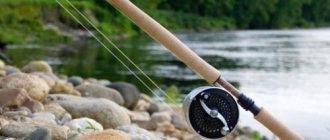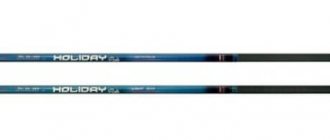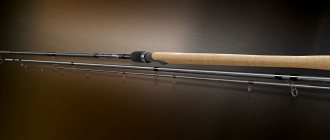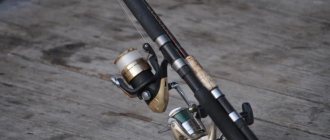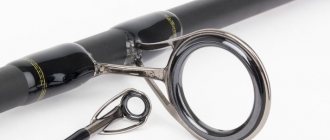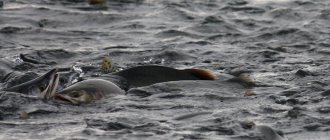Yuri 11/16/2020 192
Match rods are designed for long-distance fishing, when fishing conditions do not justify the use of a feeder. Among beginners and experienced fishermen, match tackle is becoming increasingly popular. The series of float tackle also includes a Bolognese and a fly rod. How do they differ, and what is the peculiarity of match fishing?
Why do you need a match fishing rod when you have a fly fishing rod?
The fly rod is a proven and successful tackle. It accounts for the bulk of the fish caught. It is brilliantly simple and catchy in coastal shallows and backwaters, where large fish are often found. But sometimes the coastal part of the reservoir is overgrown with hornwort and water lilies to such an extent that there is simply nowhere to throw a fishing rod. Or the depth near the shore does not allow one to hope for a bite from a large fish, which will never come to the yellowing shallows under the water next to the fisherman, no matter how he disguises himself. Meanwhile, behind the strip of coastal grass and shallow water, you can see that further on the water acquires a tempting blue, indicating that depth begins behind the grass. It is here that the edge is located, the slope to the pit, where circles on the water and splashes of a sizable tail are visible. You can't throw the bait here with a fly rod. Long-distance casting, which Bolognese or match tackle is capable of, can help here.
Gear device
The main components of a match fishing rod:
- rod;
- coil;
- main line;
- float;
- several pellet sinkers;
- leash;
- hook.
A match rod is a multi-legged plug or telescopic blank with a reel seat and guides. Its length can range from 3 to 7 meters; rods up to 4 meters long are most often used.
In match fishing, spinning reels are used, which allow long casts of light equipment.
Monofilament fishing lines are used. The best choice for catching the carp family for a match is a thin and heavy sinking line, quite elastic, without a memory effect.
In match fishing, special floats are used, which are distinguished by their large weight (a weight is attached to the lower part of the float) and good aerodynamic properties. They allow you to deliver bait to the fishing point, making long casts.
Several weights - pellets - are placed on the main line below the float. The length of the leash and the thickness of the fishing line for it, as well as the size of the hook, are selected based on the fishing conditions, the bait used, the size and activity of the fish.
Let's focus on match fishing
Outwardly, it may look like this... Casting... A long float took off above the water behind the “olive” load, and lay down on the water about twenty meters from the shore, its antenna red. The tip of the rod goes into the water to submerge the line, a little towards you with the reel and now the scarlet antenna, swaying, goes obliquely into the depths... Hooking! Living silver rests on the fishing line and flickers in the depths. And then, in the landing net, a large red-feathered sorog struggles and sleepily opens its mouth. There are a lot of them there, red-eyes, accumulated on the slope in the hole, immediately behind the strip of hornwort. Without seeing or hearing the fisherman, the fish takes greedily and confidently.
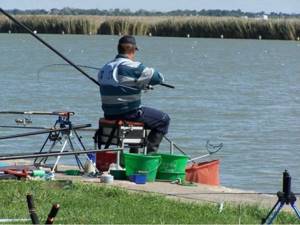
Fishing technique with match tackle
Let's look at the techniques and methods of fishing with match gear. Useful for beginners and seasoned fishermen.
Step 1: Selecting a location and preparing bait
The first thing after arriving at a pond is to choose a place where fishing will be most effective. The shore should be clear enough so that tree branches overhanging the water do not interfere with casting, and thickets of aquatic plants allow you to pull out tackle and caught fish.
Having found a suitable place and laid out things, the angler can begin preparing bait. There are no special requirements for bait when fishing with match gear, the main thing is that its consistency should be such that it is possible to form balls that can be conveniently thrown to the required distance of several tens of meters.
Step 2: Sounding the Depth
While the bait absorbs water and reaches the desired consistency, you can begin measuring the depth and searching for a specific fishing spot. It is necessary to study the bottom topography and find sharp changes in depth - edges and holes. To study the bottom, it is convenient to use a special weight that is attached to a hook; you can also move the pellet weights located on the fishing line to one point.
After a suitable point has been found, it is necessary to fix the float at the required depth, mark the required length of fishing line corresponding to the distance to the fishing point with a marker or fix the fishing line to the reel clip, and also select a landmark on the opposite bank in the direction of which the casts will be made.
Step 3: Feeding
When the depth measurement and selection of the fishing point is completed, you can begin starting feeding. The tackle is thrown to the desired point, balls are formed from the bait and thrown, focusing on the float antenna.
The ability to accurately throw balls over long distances comes with a little practice.
In some reservoirs, the fish are quite shy, so during fishing it is better to feed them with a slingshot, making small balls that fall into the water without unnecessary noise. When the bite subsides, you can feed the point with large balls from your hand.
Step 4: Casting
To make an accurate cast, you need to release the float a meter from the tip of the rod. After the float falls onto the water, you should slam the line handle and, using the form, slightly submerge the line (this must be done when fishing in windy weather).
After this, the fishing rod can be installed on the stand. It is better to position the tip of the rod as close to the water as possible. During fishing, it is necessary to monitor the tension of the fishing line: when lowering the tip of the form into the water, the float should submerge - this indicates that good contact with the tackle has been ensured.
Step 5: Hooking
Since the equipment is located at a great distance from the shore, when fishing with a match rod, in most cases it is better to hook at the slightest movement of the float, which causes the fish to touch the nozzle.
The hook should be sweeping and powerful. In order not to tear off the weak lips of the fish (for example, crucian carp or crucian carp), you must first fine-tune the clutch.
Match fishing has become very popular recently
It is also called English, but I remember that the so-called running rig has been in service with our fishermen since ancient times. Of course, the gear was simpler: a bamboo rod with guides or a spinning rod, a Nevskaya inertial reel or the first Orions, sliding homemade floats. Long casting with a float was practiced along with prototypes of the feeder and picker. Everything was already there... Another thing is that then running equipment was called everything that had a reel and rings, and allowed you to throw the nozzle at least further than fifteen meters. In modern match fishing, special rods, inertia-free match reels and Wagler floats with additional loading are used. A sinking line is also used, which has a slightly higher density compared to conventional monofilament line. An angler with modern match gear that has the correct structure is now able to cast further than 25-30 meters. If, of course, he has the skills and masters a casting technique that differs from a spinning one.
Line and leash
Lines for match fishing are characterized by increased elasticity. This thread wears less on the guides and allows you to make good casts. Every fisherman should have a sinking line in his arsenal - it is indispensable when fishing in windy weather.
The thinner the line, the better; ideally its diameter should not exceed 0.12 mm. This thread provides maximum casting distance. But when fishing for fish that are held among algae and snags, you often have to use a stronger fishing line to avoid frequent losses of equipment on hooks.
For the leash, use a fishing line with a diameter of about 0.1 mm. The length of the leash is selected taking into account the fishing conditions: the activity of the individual, the level at which the fish is standing, the strength of the current.
Rods for match fishing also have their own characteristics
The most common are considered to be rods 13-14 feet long, where the units of measurement are taken in accordance with the name of fishing - “English”.
If we translate into generally accepted sizes, then the length of running match rods will be 3.9-4.2 meters. Shorter ones are used less often. And five-meter fishing rods are used by sports fishermen, which allows them to make ultra-long casts, which are only possible with a float. But all these rods, both short and long, consist of three sections. Another feature of match rods is the frequent placement of guide rings. Usually their number, together with the tulip, is equal to the length of the rod, if counted in feet. But sometimes there are more rings. An example would be a 14-foot rod with 16 rings.
Match fishing rods are equipped primarily with screw-type reel seats.
If we talk about the structure and test of match rods, they are designed for running equipment with a total weight of about 20-25 grams. Heavier rigs weighing 35 grams are used more often by athletes using longer rods.
Review of match rods
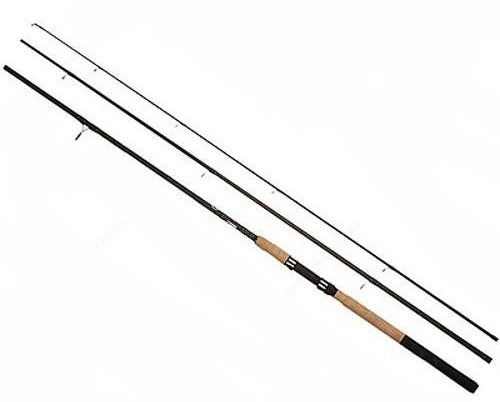
EOS Genesis Match
An excellent option for a novice fisherman who has decided to master the technique of fishing with match gear. The first and obvious advantage is an affordable price with decent performance characteristics and excellent build quality and fittings. The carbon blank is perfectly balanced and has a soft action, which allows you to make extremely long casts with equipment up to 20 g and fight large fish both in calm water and in the current. The first ring has a large enough diameter to minimize line friction during casting. Therefore, its range is always maximum. In addition to fishing with classic float rigs, this rod is perfect for fishing with sbirulino - a specially designed float invented in Italy.
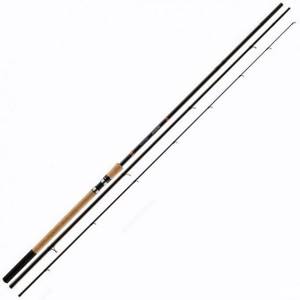
Daiwa Aqualite Power Match
A serious long-range instrument, characterized by fast action, light weight and increased power. This model is equally well suited for both sport fishing and effective amateur fishing. The 4.2-meter modification is excellent for fishing from long and ultra-long distances. The fast action helps to instantly cut through the bony mouth of a fish, the low weight ensures quick and timely recasts, and the increased power effectively fights large prey. At the same time, the rigidity of the blank is fully compensated by the shock-absorbing properties of the monofilaments. Of course, the equipment of the rod is at the highest level: lightweight guides with SIC inserts, a powerful reel seat, an ergonomic cork handle in combination with a doubloon and an elongated design for extremely long and accurate casts.
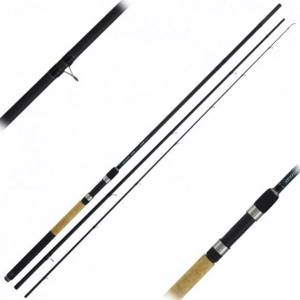
Sensas Titan Match Carp
High-quality match rod designed for carp fishing. The developers took into account the wishes of anglers and released a powerful fishing rod with increased rigidity. This allows for instant hooking, which is especially important when catching shy fish in commercial waters. This fishing rod is designed for enormous loads, therefore it has increased strength with low weight and is excellent for catching grass carp, silver carp, tench in artificially stocked bays and lakes, as well as bream, carp, large roach and silver bream in rivers. The upper test for equipment is 30 g, which means the ability to cast heavy floats at 30 - 40 meters and “get” fish from long distances, casting against the wind. High-quality guides, a reliable reel seat, and an ergonomic cork handle ensure the functionality and effectiveness of the gear.
Match reel
The main difference between the reels used in the match is the shallow spool, designed for winding thin fishing line. It is necessary that the line is flush with the edges of the spool, and casting can be done without difficulty. And in order to avoid winding excess fishing line, which will require quite a lot, a lining made of elastic material is attached to the spool. This little trick allows you to reel in just the right amount of rather expensive fishing line.
Another feature of reels for match fishing is the large diameter of the spool, which in a match are 45-46 mm along the sides. On a spool of small diameter, the line can become deformed and become like a spring. It is impossible to make a long and accurate cast with such a fishing line.
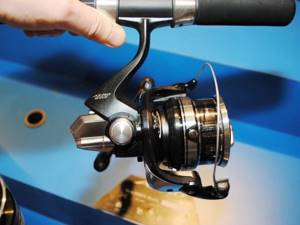
Due to the fact that match reels are made of durable and lightweight plastic, they are also lightweight, while having sufficient strength. Therefore, probably, matcha reels are also used in other types of fishing, for example, in Bolognese equipment. It is better if the friction brake is located at the rear. This allows you to adjust it directly while landing fish.
Some models of match reels with a gear ratio of 6.0:1-7.5:1 are made specifically for sport fishing, where high-speed reeling is required. Such reels are quite expensive and amateur fishermen make do with match reels with more modest technical characteristics of the order of -5.0:1-5.5:1, since their quiet and contemplative fishing does not tolerate haste and fuss.
Match structure
In Astrakhan, fishermen most often use a medium-formation match. There are also soft and hard types of fishing rods. If you open the spinning criteria, then the hard match acts as a medium action rod. Float rods are characterized by a tendency towards softness, in order to perform a smooth cast with gradual acceleration of the equipment. Match fishing does not involve a hard cast, since here we use soft bait, which can simply fly off.
- Attention! If we want to cast bait over a long distance, we choose a soft-action rod. Such forms also simplify fishing - they dampen the resistance of the fish.
For hard rods, another role is assigned - to efficiently implement the hook, especially when we have a long distance.
Line for match fishing
As already mentioned, the main difference between match lines is their ability to sink. This is due to the qualities of the fishing line such as density and weight, which are slightly higher when compared with conventional nylon-based monofilament fishing lines. But due to the acquired ability to sink in water, the fishing line for the match lost in strength. With equal diameters, match fishing line will be inferior in tensile strength to traditional monofilament.
How is match line marked?
Match fishing line is marked on the packaging with the inscription “sinking”, indicating that the fishing line is intended specifically for this type of fishing. Domestic fishermen, resourceful as always, have learned to degrease ordinary fishing line and thereby sink it, at least at the first stage of fishing. And for such purposes, various cleaning products from the arsenal of housewives are used, for example, known from the annoying Ferry advertisements.
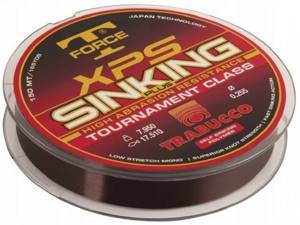
Why is the matcha line dark?
Unlike transparent monofilament lines for fly fishing or Bolognese fishing, the line for match fishing is dark in color . This is necessary so that marker marks are clearly visible on it, since the tackle involves long-distance accurate casts to the same baited place. And it’s best to mark the desired casting length with a marker. A thin line pinched in the reel clip may not withstand the jerk and then there is a risk of losing a good float, and not the cheapest one at that.
Fishing rods - fly rods, Bolognese rods, match rods...
What fishing rods should you buy, and what to do with them then... how to choose a fishing rod so that it turns out to be comfortable, useful, and successful for a long time...
There are several types of fishing rods; they differ from each other in the most significant way. The diversity is caused by the fact that fish have to be caught in a variety of places, and you need to adapt to any conditions... Let's figure out in order which gear will be suitable in which cases.
Where is the fish
- The fish can be literally under your feet, 1 - 2 meters from the shore, in the thickets, under the shore edge. This can happen on rivers and lakes. And carp often almost come ashore on foot at night. 3-5 kilogram carp are caught 2 meters from the water’s edge with 5-meter fishing rods placed further away on the shore so that the fisherman is not close and does not scare away the fish...
- Near the gently sloping shores on the lakes there are always a lot of small fish - bleak, roach, rudd, silver bream, bream, crucian carp... This small fish actively develops feeding coastal areas at 3 - 7 meters, especially if there are thickets of aquatic plants there.
- A little further from the shore, at a distance of 10–15 meters, there is an area that is often visited by schools of any fish. Usually the depth in this place begins to increase, often the first edge (a sharp drop in the bottom) passes here, which is always liked by fish, both peaceful and predatory. Therefore, a distance from the shore of 10 - 15 meters is the hottest zone for the float fisherman, in which, as a rule, the most fishing is done.
- But it also happens that fishing spots are located further away - at a distance of 20 - 40 meters. This could be the opposite shore of a bay, a canal, or in this place there could be a snag, a spring, a change in the topography and bottom structure. Likewise, large fish are often cautious and do not come closer than 20 meters to the shore, and they have to be caught at long distances.
There are different types of fishing rods for fishing in different conditions.
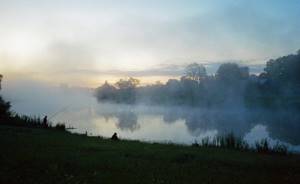
Fly fishing rod - always useful
Flywheel means without rings and coil, light and simple. They control the equipment by making swinging movements.
For high-speed fishing in the coastal zone of small fish - roach, rudd, crucian carp, bleak... very often you need a short fly rod with a length of only 3 - 5 meters. The little things should not be neglected at all, because its bite is confident, and its gastronomic qualities are often excellent. In addition, a good half of fishing trips take place in such a way that, apart from small change, the fisherman gets nothing else...
Fishing rod for change
For fishing, we choose a short, light fly rod with a fast action - one tip bends. We equip it with a thin fishing line of 0.1 mm and a leash of 0.08 mm, with a hook No. 18 - No. 22, depending on the attachment. And we select a float of bleak class with a buoyancy of 0.3 - 0.7 grams, we surround it so that only 2 cm of the antenna remains above the water.
Now an excellent weapon for high-speed coastal fishing is ready. All that remains is to collect the riding fish by constantly throwing small balls of dry food, which would form a large cloud.
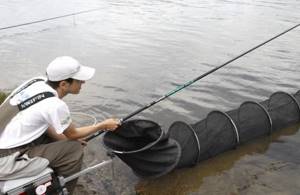
Regular rod
To fish a little further from the shore, in the promising zone from 10 to 15 meters, you will need a fly rod 6 to 9 meters long. But fishing rods with a length of 8 meters or more are still somewhat difficult to control. And the extra couple of meters of distance that you can get with them is not always decisive when fishing.
Much more important is the speed of manipulation and confident control of equipment. After all, a fly rod is designed for high-speed fishing, and this is its decisive advantage.
Therefore, for initial mastery, it is not recommended to take a rod longer than 7 meters. With a fishing depth of 2 meters, with such a fishing rod you can fish at a distance of 11 - 12 meters from the shore, which is usually a very profitable fishing zone.
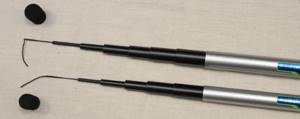
Simple equipment
This rod also comes with the lightest rig available. But the windage of the long line will begin to affect the load, so heavier equipment will be needed, otherwise casting and control will be impossible. The float is selected - 0.8 -2.0 grams. The load consists of the main load of pellets, which are clamped on a fishing line 0.5 - 1.0 meters from the hook, and a sub-load located near the hook 10 - 25 cm. Fishing can be done by weight, or the sub-propagation can lie on the bottom. Floats are selected to be elongated for calm water and round for wind, waves, and surface currents. Various rigs and leashes for the fly fishing rod are prepared on the reels in advance and then installed depending on the conditions.
Common catches with this type of gear are roach, bream, rudd, perch, chub, ide, crucian carp, carp, weighing up to 1 kilogram. For more confident control of the equipment, and landing decent specimens, it is better to choose a fishing rod with a length of more than 5 meters, not of fast action, but of medium or slow action.
For riding fish, it is better to use active bait, which disintegrates already at the immersion stage, and for catching bream and carp - bottom bait, with a large number of nourishing components.
Bolognese rod - for fishing in the current
The Bolognese fishing rod is equipped with rings and a reel. This makes it possible to flexibly adjust the length of the fishing line and make movements along the river flow by releasing the fishing line from the reel. For fishing in open reaches, fishing rods 7–8 meters long are used. With the help of longer rods, you can also guide further from the shore along the bait trail. And in cramped conditions under the banks, near the thickets, you have to use rods 4 - 5 meters long. But these are usually steep places where a long distance is not needed. The coil selected is inertial wiring, very light. In general, when choosing a Bolognese fishing rod, you need to pay special attention to the lightness of the tackle, since it will almost always be in the hands of the fisherman.
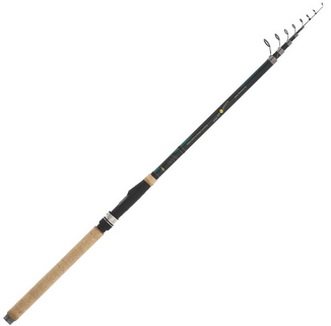
The equipment is selected according to the speed and depth of the current, and is often installed directly during fishing for specific conditions. Fishing in the current is technically difficult; it is important to understand how the bait behaves in the water. To prevent it from rising in a stream, on a thin line of 0.14 mm the load is increased to 5 - 12 grams or more. In this way, you can make the bait drag along the bottom, and 20 centimeters of the leash would lie on the bottom. In this case, a leash with a length of 40 centimeters is used.
The float is chosen to be spherical in shape, as it is the most stable, or even flat - for fast flow. When fishing, always make sure that the wiring of the equipment follows the stern trail. Sometimes, in order to maintain the wiring line, the fishing rod is raised up as high as possible in order to raise the line to the float out of the water and reduce its influence on the wiring.
But the Bolognese fishing rod can also be used for fishing in still water. Releasing the line from the reel is necessary if fishing is done from a boat, or if you are catching a large fish, the initial jerk of which can only be extinguished by the distance traveled.
Match fishing rod – long cast
This tackle allows you to cast long distances and catch large fish in places where they prefer to be away from the shore. If you need to fish at distances greater than 15 meters, you need a match fishing rod. A standard length match rod is about 4 meters, with a large number of rings on high legs. Only a light inertia-free reel with a large spool and a large gear ratio is used.
Floats may be different. If the depth does not exceed 3 meters, then casting a stationary float is possible, and its use is always preferable. If the fishing depth is large, then you need to install a stopper on the fishing line, to which the float sliding along it will rise.
It is the mass of the float that determines the flight qualities of the entire gear. For long casts in windy weather, you need to use floats that are heavily loaded with their own weight.
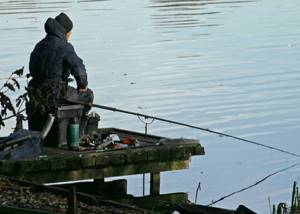
The fishing line used is 0.14 - 0.15 mm, sinking. The large length of the fishing line does not affect the behavior of the equipment, since it sinks under the water and the tip of the fishing rod also falls under the water. And high catchability is achieved by using the smallest hooks and long thin leashes.
Plug tackle - effective fishing
To increase fishing efficiency, you need a plug fishing rod. Its length is 11 - 14 meters, the equipment is delivered to the input by extending the rod and attaching additional bends to it. The line itself is quite short - for the fishing depth, plus a margin for managing the equipment in the region of 0.5 - 0.8 meters. Fishing is always done under the tip of the rod, and this radically changes the situation with the management of equipment.
Casting, or rather casting, is always done in the same place. Feeding also with a cup on the rod in the same place. It becomes possible to carry out any wiring, and most importantly - the use of the lightest equipment - 0.5 grams for still water at such a long distance, because there is no long fishing line here, and its windage no longer dictates the increased weight of the equipment. Hooking fish can be very effective, as it is done instantly to any movement of the float. In general, this is a slightly different fishing, the effectiveness of which is appreciated by many anglers.
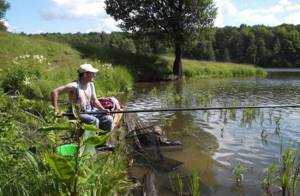
Also, a rubber shock absorber is often installed inside the plug, allowing large fish to be removed. Controlling the plug is slightly cumbersome, it needs to be learned, in particular, the accuracy of installing the rear outlet roller, so that at the moment the butt comes off it, the center of mass of the rod is exactly in the hands of the fisherman (removal without jerking), as well as many other nuances. But that’s what makes float fishing and pole fishing in particular so interesting.
Which fishing rod do you prefer?
For fishing you need to choose all the fishing rods. After all, what fishing conditions you will encounter and what kind of fish you will want to catch is never known in advance. Even if there is a monotonous body of water, for example, a canal, there will still be a use for all the gear indicated here - both under the shore, and at a medium distance, and at a long distance, and for a plug, and for guiding downstream... But for your first fishing trip you need, of course, at least a small, very light fly fishing rod. Which will help you have a great time in nature...
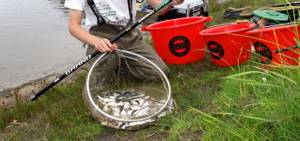
And now about the floats...
The match uses floats that have a built-in constant or variable load. Constant loading can only be supplemented with weights on the equipment. The weight of the floats remains unchanged. Floats with variable weight have a screw fastening for additional washers or containers for fillers, for example, for shot. Both washers and fillers serve the same purpose - to increase the weight of the float and the casting distance.
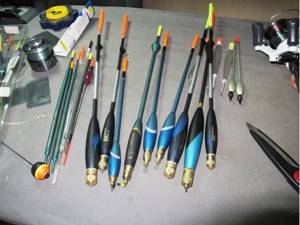
Match float antenna
Another important component of a match float is the antenna, which can be quite long. And the total length of match floats with antenna and tail is about 30-35 cm, and sometimes up to half a meter. The center of gravity shifted to the bottom, the drop-shaped shape, the arrow-shaped tail of some floats - everything serves for good flight and casting range. These aerodynamic qualities are as inherent in match floats as in airplanes.
Float mounts
In match fishing, there are two types of float attachment, which determine the concept of fishing itself for each case. When the float is firmly attached, fishing is possible in places where the depth is less than the length of the rod. The sliding attachment of the float at one point allows you to fish at a wide variety of depths, but this equipment is not as sensitive as in the first case and less controllable.
The floats are fastened using special fasteners from Italian brands: Trabucco, Stonfo, Milo. For blind equipment, soft cambrics are used. Sliding floats are attached using stainless steel bushings that move freely along the fishing line. The bushings are connected to fasteners, which prevents the line from twisting and tangling. Stop units or silicone stops with beads are used as a limiter against which the sliding float must rest at a given depth.
Float rod equipment
The equipment of float rods consists of four parts:
• Hook.
Tenacity and strength are important for a fishing hook. You need to pay attention to the shape of the hook. Any fish, once hooked, will try to jump back. And even more so an active fish. This means that the hook must be of such a shape that it firmly holds the prey. The material from which the hook is made must ensure the strength of the structure. So that it can withstand the maximum weight of fish declared by the manufacturer.
• Float.
The float must be selected for specific water, specific weather and for a specific type of fish. Shape and strength are important here. The float should bounce off the water elastically.
• Sinker.
To hunt fish in water with a current, you will need sinkers shaped like an olive. And for fishing in still water, pellet-shaped sinkers are suitable. Experienced fishermen recommend hooking several weights at a time: 3-4 pieces.
• Leash.
The length of the leash, depending on fishing conditions, should be from 0.1 to 0.3 meters. The monofilament should be slightly smaller in diameter than the scaffold.
The quality of the equipment is no less important than the quality of the rod itself.
Fishing with a float rod
In order to not only have a pleasant time fishing with a float rod, but also bring home a good catch, you need to fish correctly for a specific type of fish.
Bream fishing
You can buy float rods for bream hunting. For this type of fishing, long match rods, large fly rods, or long sports plug designs are well suited. If you want to buy one float for any weather, then a cone-shaped one will do. If you are ready to change the float depending on the weather, then you need to choose two: a feather-shaped one for calm weather and a barrel-shaped one for windy weather. It is good to choose a leash made of fluorocarbon. As bait, bream “prefers” worms, bloodworms, maggots, steamed peas or pearl barley, and corn.
Roach fishing
A good catch of roach can be obtained with a mid-class match float rod. A keel type float is suitable for this kind of fishing. It can be called universal. For greater accuracy, you can change the floats: for flow, choose spherical, and for depth, drop-shaped. In summer, roaches bite well on bread, semolina, and corn grits. At other times of the year it is good to fish for red worms or maggots.
Carp fishing
Long, yet lightweight fly and match fishing rods are suitable for carp fishing. The float should be in the shape of a spindle, with a high antenna. In the warm season, bread, corn and peas are good baits. And in autumn and winter - bloodworms and worms.
